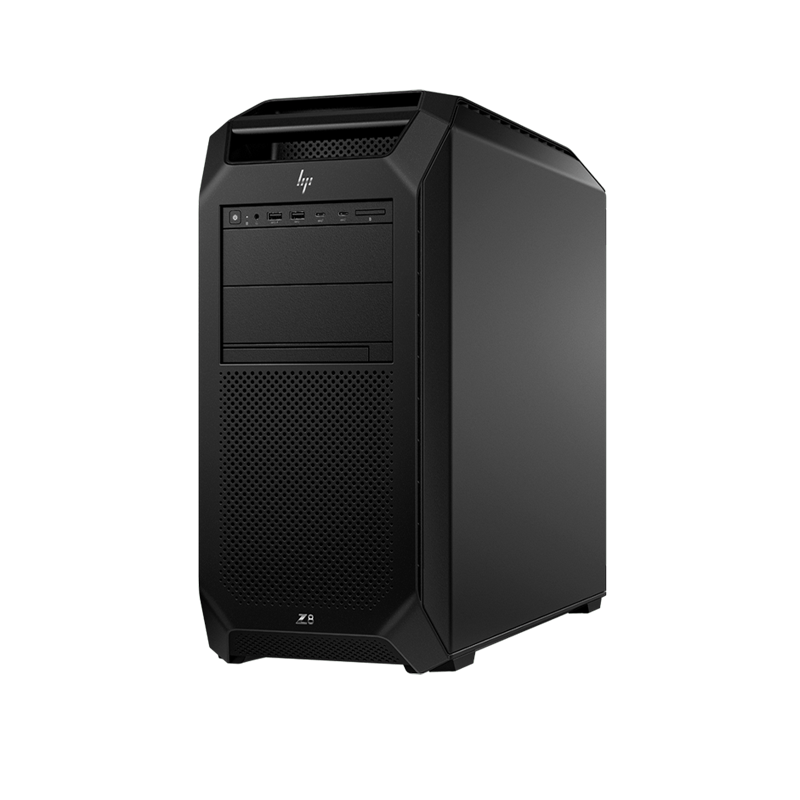Key differences between HP workstations and PCs
Categories: Industry News
Hewlett-Packard(computer) workstationMain differences from PC

- Difference 1: Xeon, multi-core CPUs for more computing power
An important difference between a workstation and a PC is the chipset and theprocessing unitThe former tends to use workstation-grade chipsets and more powerful multi-core processors, or to support multiple processors to meet the large number of floating-point operations and 3D rendering work in graphics applications, for example. For example, the HP Z800 workstation supports two Intel? Xeon? multi-core processors. As you know, oil and gas exploration, geographic information systems, large automobiles, and airplanes,CAD/ CAM manufacturing, digital content creation and other high-end visualization technology focus on the application of the field, the computer hardware configuration has put forward extremely demanding requirements. Only equipped with a powerful Xeon processor is enough to support the visualization of massive data processing and high-definition complex three-dimensional graphic data high-speed and stable computing.
- Difference 2: Full support for professional graphics cardsOpenGL standardThe company's products and services are designed to meet the needs of the market and to provide a wide range of products and services.
In the graphics application is more important to the display, workstations generally use professional 2D or 3D graphics cards, and ordinary graphics cards focus on DirectX and a small portion of the use of OpenGL game optimization is different, the professional graphics cards fully support the OpenGL standard, and provide hardware acceleration. And support for higher screen resolution or multi-head output, like HP Z200 optional professional 2D graphics cardNVIDIA Quadro NVS 295, which can support dual 2560x1600 resolution outputs, while using theATI graphics cardThe HP mobile workstation EliteBook 8540w/8740w can support up to five independent displays, especially suitable for graphic design, finance and other users of large screen display needs. The professional 3D graphics card has been specially optimized for commonly used 3D design software for better processing, and can display complex 3D models with high precision, allowing for higher performance in professional software applications.
- Difference 3: massive memory, ECC error correction, more powerful scalability
Compared to PCs, workstations offer better scalability. Professional applications such as graphic design and video editing require large amounts of memory, and PCs tend to support a maximum of 8~16GB RAMWhile workstations tend to utilize 64-bitoperating systemThe HP Z800, HP's flagship dual-lane workstation, can support up to 192GB RAMEven the entry-level Z200/Z200SFF workstations can support up to 16GB of ECC memory.ECC memory detects and automatically corrects temporary per-memory errors, improving data integrity and system reliability. Foremail, word processing, and other applications, data integrity issues may not be serious. However, for mission-critical design or financial transaction applications, jumping from a0 to a1 may bring about catastrophic failures and cause serious losses.
- Difference 4: Liquid cooling, to ensure stable operation of continuous high loads
Continuous high workload stability is not only a major feature of the workstation is different from the PC, but also branded workstations are stronger than the obvious advantages of saving. Workstations need to work for a long time, the stability of the system requires a high degree of stability, and therefore tend to use hardware with a higher degree of reliability. In addition to graphics cards, CPUs and other key components, HP workstations also use a high-quality power supply to ensure the stability of the power for a long time in the work. In addition, in the cooling and quiet also spared no effort, HP's entry-level work HP Z400 and high-end workstations HP Z800 are used in the mature liquid cooling technology, once and for all to solve the "cooling" and "noise" contradiction.
- Difference #5: Extensive ISV Certification Provides Fuller Compatibility
Extensive ISV certification as the technical highlights of HP workstations is a strong proof that branded workstations are more advantageous in terms of stability and compatibility. HP workstations have the industry's most extensive ISV certification, through cooperation with independent software developers such as Adobe, Autodesk, Ansys, Avid and other independent software developers certification testing, professional software in the workstation platform performance is more stable. Even for animation giants such as DreamWorks, faced with huge 3D rendering and calculation work, HP workstations are still able to run smoothly during long periods of high load, effectively avoiding work delays caused by downtime.
Successful workstation products are not just a pile of high-quality hardware, each workstation factory has been rigorously tested in the laboratory to ensure its outstanding quality and reliability. In the face of increasingly fierce product homogenization, the industry's leading brand workstation manufacturers in the powerful hardware configuration based on HP also provides such as independent innovation software, third-party value-added software random gift and quality after-sales and other value-added services.















